The Plus model in Samsung’s Galaxy S lineup always ends up being the lowest-selling one, but it has its admirers and there’s always the question of what Samsung can do to make the Plus models more enticing to prospective buyers. The Galaxy S24+ was the company’s chance to bring something exciting to the table, but did it?
Samsung gave the Galaxy S24+ a much brighter, higher-resolution screen, a tougher body, and a bigger battery. Are those upgrades enough to make people opt for the Galaxy S24+ rather than going straight to the Galaxy S24 Ultra, which has a Snapdragon chip, a titanium body, and higher-resolution cameras?
More importantly, has Samsung improved Exynos chips this year? After being burnt by the company’s in-house chips for far too many years, it is hard for people to put any trust in them. The Exynos 2400, which is used in the Galaxy S24 and the Galaxy S24+, is the South Korean firm’s last chance to change people’s perspective.
Has Samsung managed to do any of that? The answers to all those questions are in this review.
Design
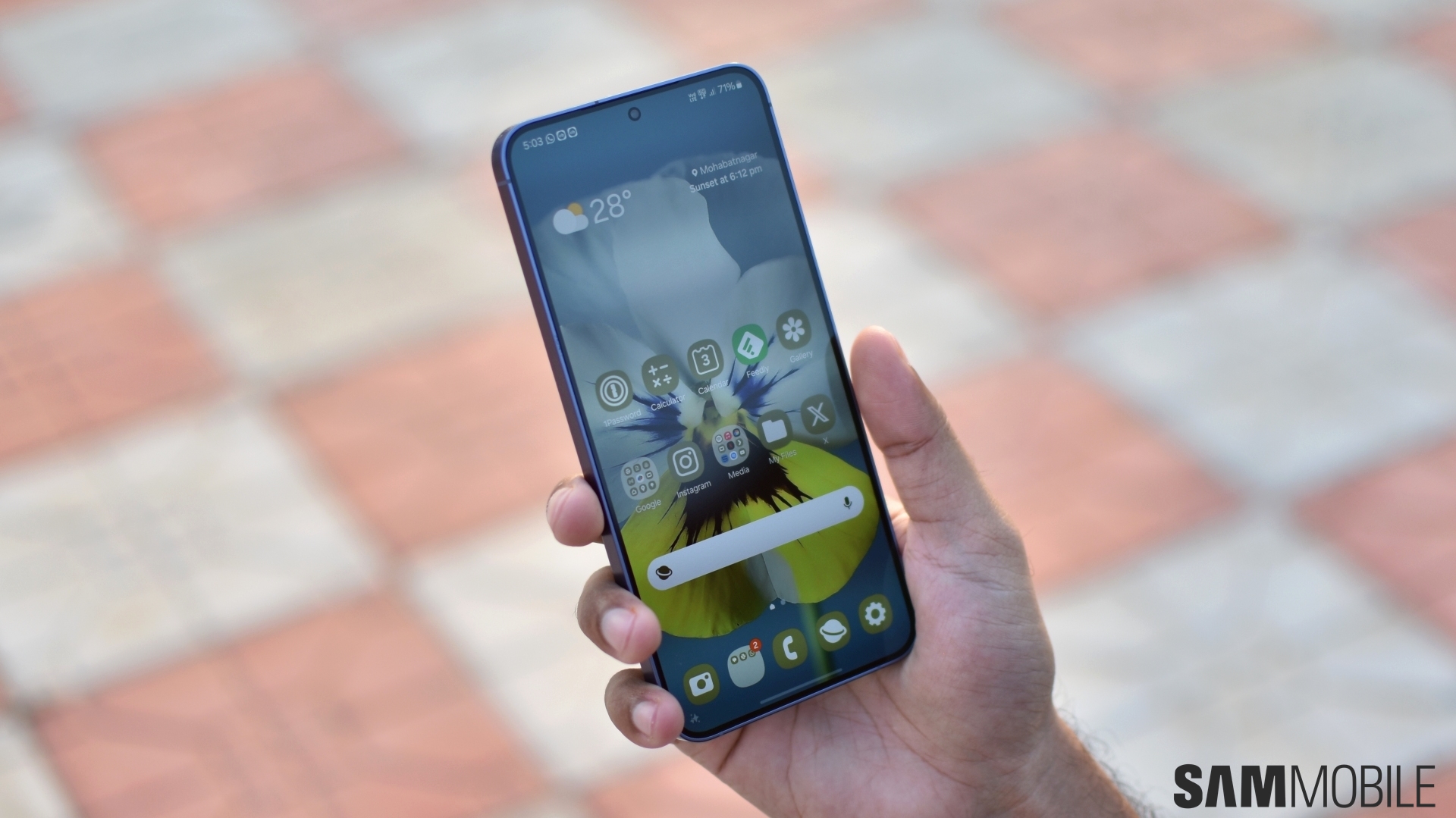
Samsung has gone with its tried-and-tested design for the base and Plus models once again. The Galaxy S24+ looks similar to the Galaxy S23+ and the Galaxy S22+. There are a few minor changes, including thinner and symmetrical bezels, completely flat sides, and a slightly tougher body.
The S24+ also feels nicer to grip, and it seems like Samsung designed the Galaxy S24+ in a way that is inoffensive for as many people as possible. Despite having a screen size that’s similar to the Galaxy S24 Ultra, the Galaxy S24+ feels a lot more compact and comfortable, thanks to its lightweight body and curved corners.
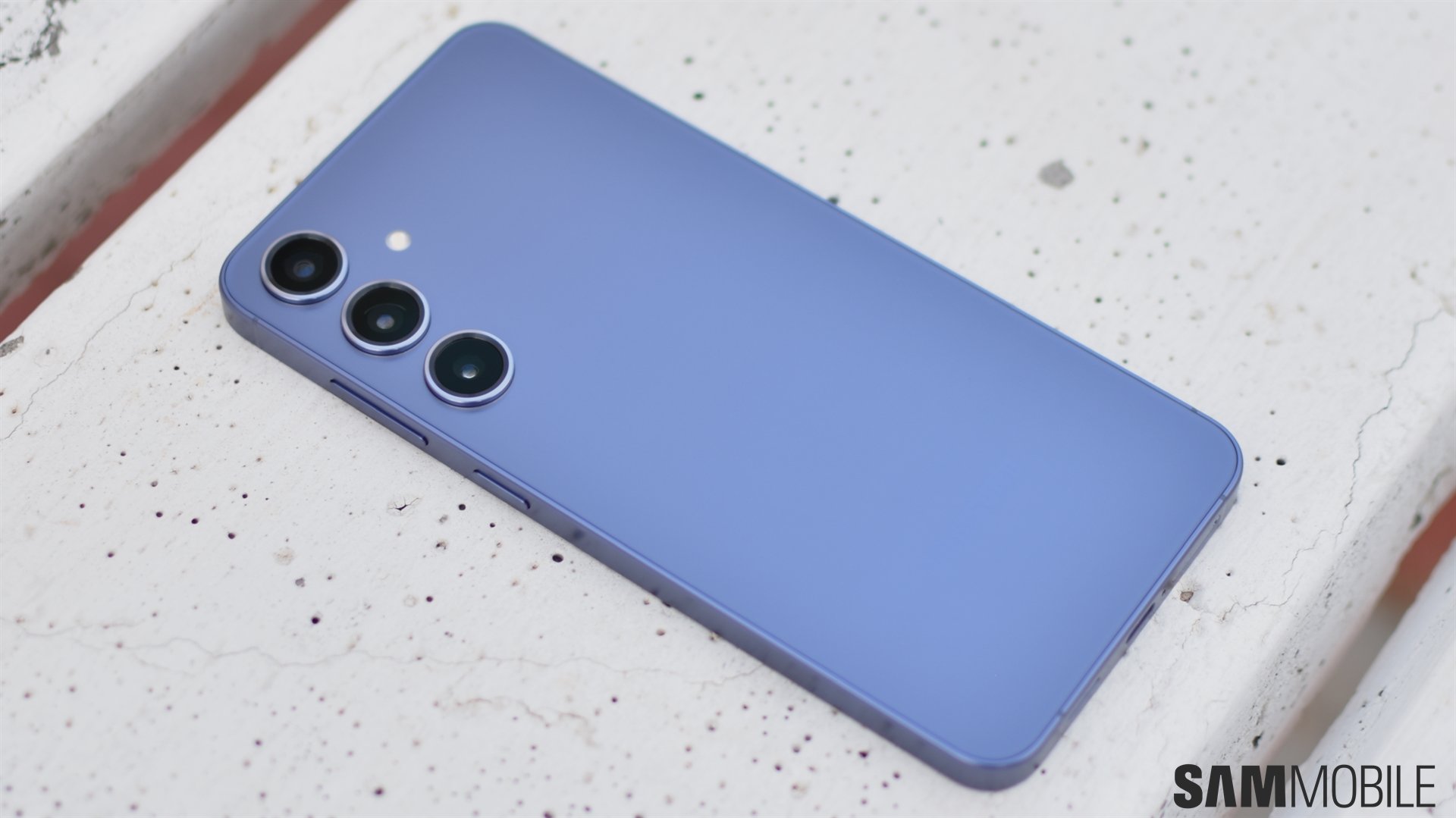
The Gorilla Glass Victus 2 protection on the front and the rear is the same as the Galaxy S23+, which should save the phone from minor scratches. There is a matte finish on the rear, which hides fingerprints well.
Samsung designed the Galaxy S24+ in a way that is inoffensive for as many people as possible
The unibody frame uses a slightly tougher Armor Aluminum 2 material, which Samsung claims to be tougher than last year. While it is no titanium, we feel it should be good enough for most users. The phone is also IP68-rated for dust and water resistance, which should give you peace of mind when you venture outdoors on a cloudy day or decide to spend some time at the beach or the pool.
Samsung also has pretty good color choices on the offer. We received the Cobalt Violet color variant of the Galaxy S24+, and it looks really good. You could say Samsung has used the same design for far too long, but you can’t say it’s a bad design: the Galaxy S24+ looks inoffensive, simple, and sleek, and feels comfortable in day-to-day use.
Display and audio
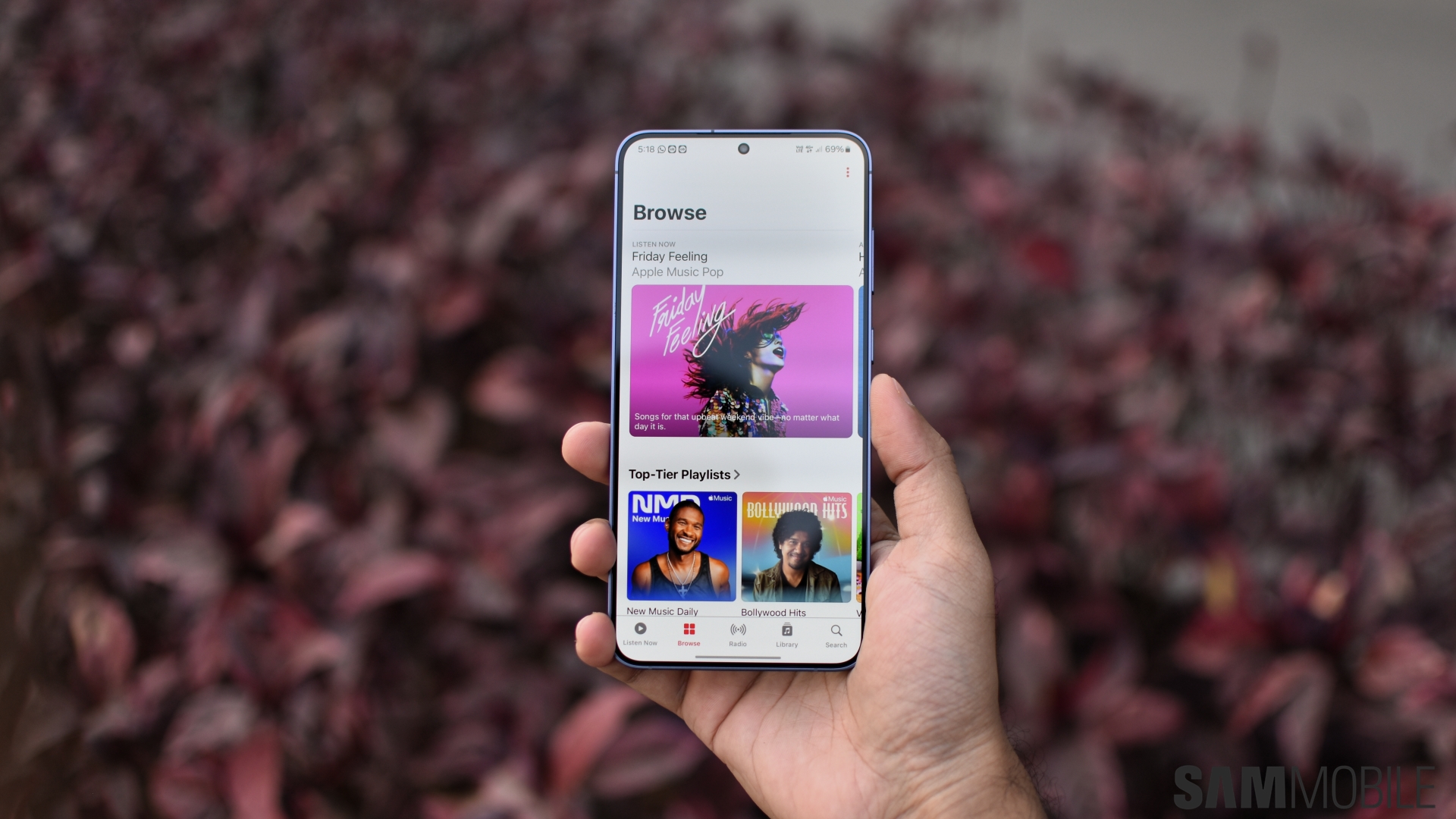
The 6.7-inch screen on the Galaxy S24+ is its biggest upgrade. Even if you spend $300 less than the Galaxy S24 Ultra, you can still get the best display panel on any Samsung smartphone. It has the same QHD+ resolution and the same 2,600 nits peak brightness as the Galaxy S24 Ultra.
Speaking in percentages, the S24+ display is 30% sharper and 50% brighter than the screen on the Galaxy S23+! The screen continues to be completely flat, and the fingerprint sensor works extremely well. The only Ultra features you’re missing here are the S Pen and Gorilla Glass Armor screen protection.
You’re getting a top-of-the-line display with the Galaxy S24+
The display looks tack sharp and visibly bright, making content on the screen easily legible even under direct sunlight. Samsung has toned down colors a bit compared to the Galaxy S23 series. Even if you use the vivid color mode, the screen doesn’t look as colorful as the Galaxy S23, which may or may not be fixed by Samsung via a software update.
The screen is also HDR10 and HDR10+ compatible, which means you can stream HDR videos from video streaming apps like Disney+, Netflix, Prime Video, and YouTube. Good video footage looks stunning, thanks to perfect blacks and high peak brightness in HDR scenes. Gaming looks great, too.
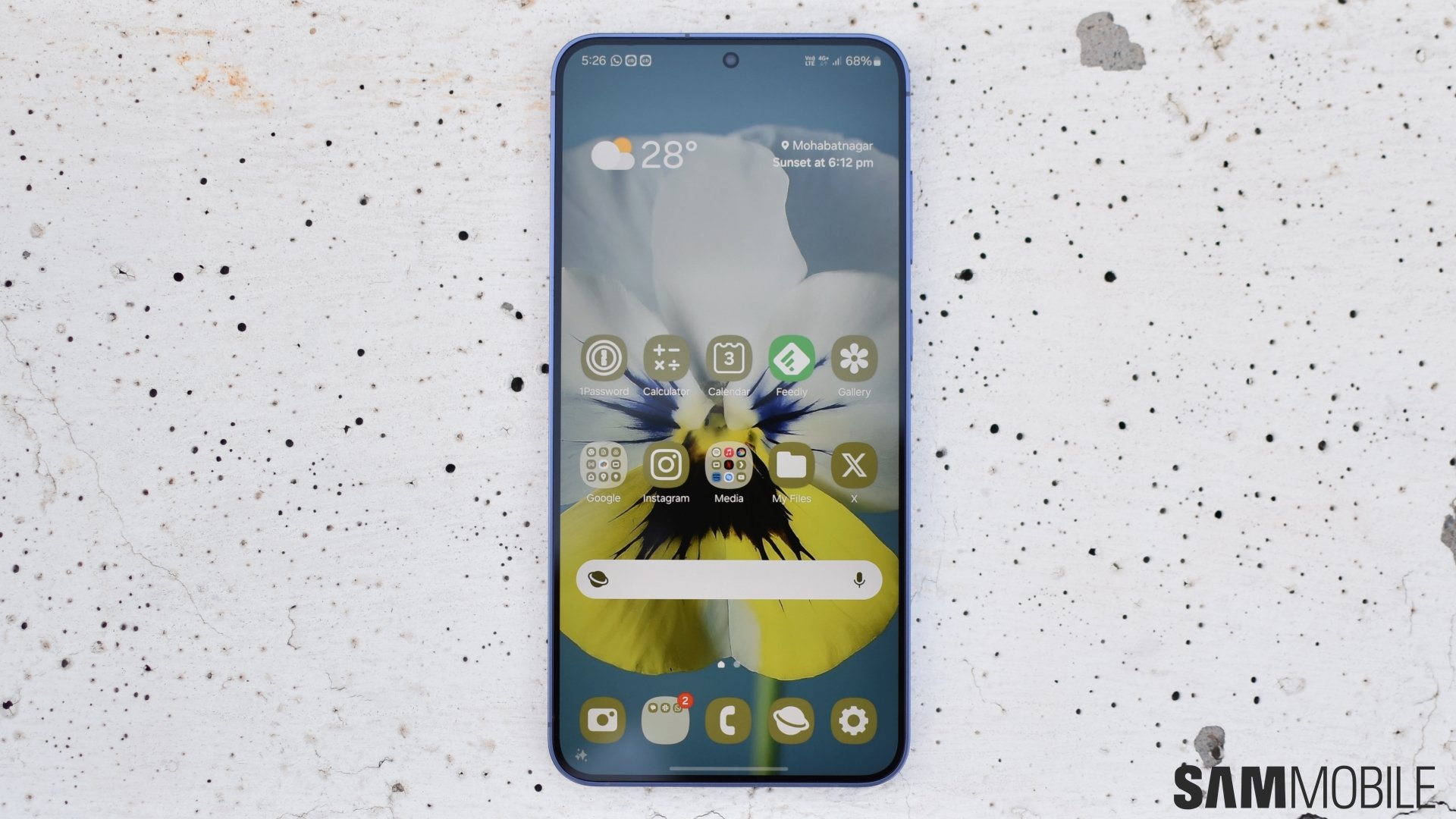
The LTPO screen can adjust its refresh rate on the fly to suit the content that’s being displayed on the screen. For example, it is 10Hz or 24Hz when it is idle on the home screen, 30Hz while playing 30fps videos, 60Hz for 60fps video playback, and 120Hz while scrolling or playing games with 120fps modes.
The refresh rate may go down to 1Hz for things like the Always on Display mode, though we weren’t able to confirm if it actually does that. Any way you look at it, you’re getting a top-of-the-line display with the Galaxy S24+. We just hope Gorilla Glass Armor protection trickles down to the Galaxy S25+ next year for the ultimate experience.
Samsung also seems to have improved the stereo speaker setup. They feel slightly louder and the mid frequencies seem to be reproduced better. Bass may have been slightly improved as well, though it’s still not as good as we would like, especially compared to the speakers on Apple’s iPhones.
Cameras
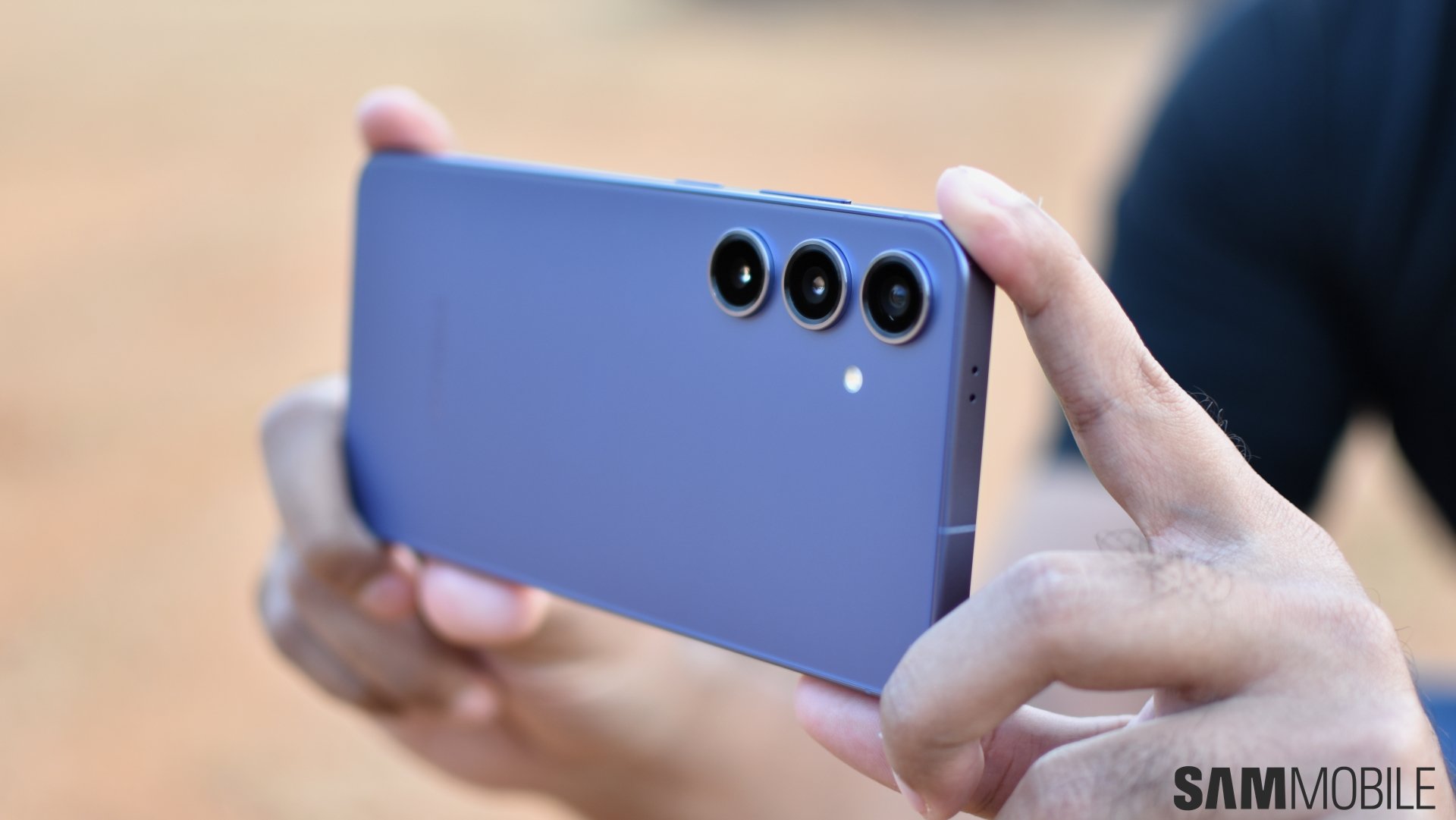
The cameras are where you will find the Galaxy S24+ underwhelming in terms of upgrade factor. It uses the same cameras as the Galaxy S23+, which means you are looking at a 50MP primary camera with OIS and dual-pixel autofocus, a 12MP ultrawide camera, a 10MP telephoto camera with 3x optical zoom and OIS, and a 12MP selfie camera with autofocus. All the improvements in image and video quality come down to the software and algorithms.
Images captured in daylight conditions are, as usual, great
Right off the bat, the Galaxy S24+ is faster in shooting images. There is a considerably lower lag between shots, and that is due to Samsung’s new image processing pipeline that handles image capture and processing simultaneously, which means the camera can continue taking pictures while previously captured frames are still being processed for HDR and other improvements.
Images captured in daylight conditions are, as usual, great, as expected from Samsung. The colors are largely true to life, with some added boost, and the dynamic range is plenty wide. Noise is controlled well, though noise reduction seems to be less aggressive compared to previous devices. That means the image can look a little grainy when you zoom in.
Here are some pictures captured with the primary rear camera:
There are no issues with autofocus accuracy or speed on the front or rear cameras. Another improvement we’ve seen is that Samsung has toned down the sharpening, and you might sometimes feel that the phone captures lower details than the Galaxy S23+. But we think most people will like the colors in the images captured using the Galaxy S24+ as they can be posted straight to social media websites or sent to family and friends without any editing.
Here are some portrait/bokeh photos captured with the primary and 3x telephoto cameras:
The ultrawide camera is adequately good, featuring color tuning similar to the primary camera. The dynamic range is wide, too, but it isn’t as good as the primary camera. We noticed the shadows weren’t developed as well as they are on images captured by the primary camera. Samsung also continues to keep autofocus support for the ultra-wide camera exclusive to the Ultra model, which limits your ability to take macro shots.
Here are some photos from the ultra-wide camera:
The telephoto camera on the phone is good, and it does its job of capturing good images and videos of far-away objects. There is a good amount of detail in the images, and there are no issues with the dynamic range.
Samsung has scaled down the sharpening, which is a good thing. While the telephoto camera has a 10MP resolution, all images captured using the telephoto camera are upscaled to 12MP. Even if you pixel-peep, you won’t be able to notice that these are upscaled images.
In low-light conditions, the primary camera performs really well, and we didn’t find any fault with the Galaxy S24+. The colors are good, and so is the dynamic range. With Night Mode, scenes with complex lighting are rendered better, as the phone captures multiple frames to widen the dynamic range and restore highlights and shadows.
Here are some photos captured at all magnification levels (0.6x/ultra-wide, 1x, 3x, 10x, 20x, and 30x):
Even with Night Mode activated, images look like they were taken during the night. You won’t find the night sky turned into the evening sky. So, unlike some other brands, Samsung is not taking an aggressive approach here, which we think is an advantage as it saves the essence of that scene.
We feel that the telephoto and ultrawide camera are now showing their age, and rival phones with bigger or higher-resolution sensors can capture images with slightly higher details or lower noise during low-light conditions. There is higher noise, especially in darker parts of images.
The telephoto and ultrawide camera are showing their age
Sometimes, there is color cast in darker parts of images, and the white balance isn’t the same between the three rear cameras in low-light conditions. It is time Samsung switched to better camera sensors for its non-Ultra high-end phones. While the images aren’t bad, we think Samsung could have done better if it had used better hardware.
One thing that irritates us is the inability to switch between cameras while recording 4K 60fps videos. That is only offered on the Galaxy S24 Ultra. We think all three phones have hardware that is good enough for that feature, but Samsung is artificially limiting what is a genuinely useful function to its Ultra phone.
When it comes to video recording, all the cameras on the Galaxy S24+ perform really well in daylight conditions. You can capture 8K 30fps videos using the primary camera and up to 4K 60fps videos using all other cameras (front and rear).
The detail level in the 4K videos is good, and so are the colors. The dynamic range is wide on all three cameras, and the stabilization is great. There is a minimal color shift between the three rear cameras. Noise is visible in darker scenes, especially when using the phone’s telephoto and ultrawide cameras.
8K videos shot in daylight conditions are perfectly usable, and the image stabilization is better than competing phones. While the video recording still falls slightly short of the new iPhones, no other Android smartphone brand comes close to Samsung’s flagships in terms of videos.
You can record ultra-steady QHD videos at 30fps and even switch between the primary and ultrawide cameras. Samsung has added the ability to capture videos from two cameras simultaneously, but the resolution of such videos tops out at 1080p 30fps, which is not the case on the S24 Ultra.
Portrait videos can be captured at 4K 30fps, and they are quite better compared to when the feature debuted with the Galaxy S21 series. Another feature addition is the ability to record slow-motion videos at 4K resolution and 120fps. The quality of those videos is great; we find it more useful than the older feature, where 720p videos were recorded at 960fps.
The selfie camera is top-notch and arguably the best in the business
The selfie camera is top-notch and arguably the best in the business. The 12MP unit has dual-pixel autofocus, and the results are quite pleasing. In daylight conditions, selfies look really good, with plenty of details, wide dynamic range, and pleasing colors. There is no evident issue with noise.
Here are a couple of selfies in the standard photo mode and portrait mode:
The selfie camera also has a decently wide field of view, and you can fit in the faces of three persons with the phone at your arm’s length. Videos, too, are stable and have good colors and dynamic range.
Even in low-light conditions, the selfie camera performs really well, and we didn’t notice any glaring issues with it. Sometimes, there might be more noise than we would like, but it is still among the best selfie cameras out there. You can get even better dynamic range with Night Mode, but you will have to keep your hands steady for a couple of seconds.
Performance
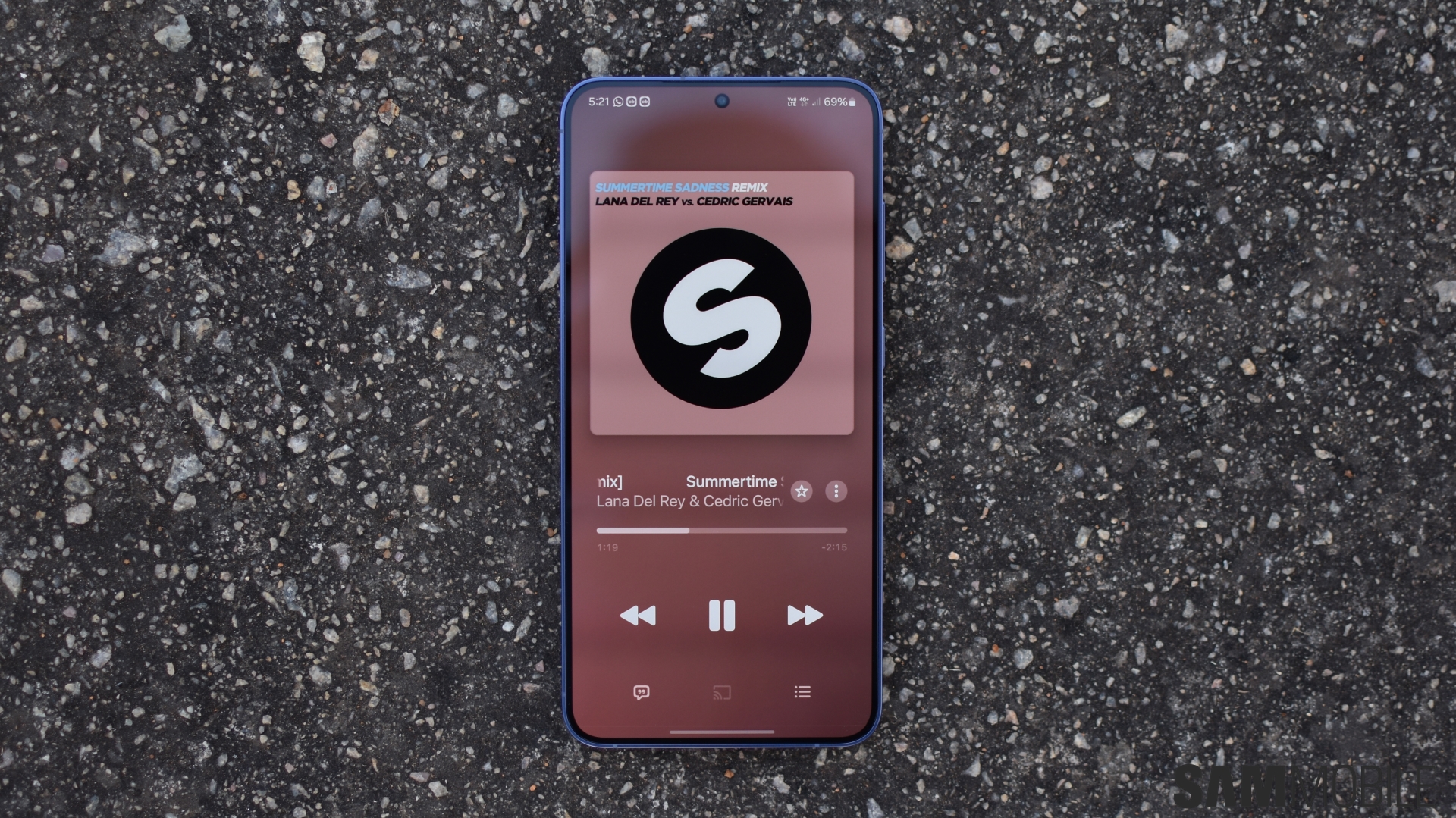
Now, let us talk about the elephant in the room: Exynos 2400. Samsung has brought back its in-house chip after a one-year hiatus. It is made using Samsung Foundry’s third-generation 4nm process (4LPP+) and uses the FOWLP chip packaging technology for improved power efficiency and lower heat. That should ideally mean that the Exynos 2400 is as good as the Snapdragon 8 Gen 3, but is it?
Animations and transitions are smooth, and switching between apps is instantaneous
We didn’t find any noticeable difference between the Galaxy S24+ and the Galaxy S24 Ultra. The animations and transitions are smooth, and switching between apps is instantaneous. However, there are indeed differences between them when it comes to raw performance, at least when it comes to benchmarks.
In Geekbench 6, the S2+ scored 2,081 points in the single-core test and 6,665 points in the multi-core test. These CPU performance scores are better than the Snapdragon 8 Gen 2 but slightly lower than the Snapdragon 8 Gen 3.
In 3DMark’s famous Wildlife Extreme test, the phone scored 4,069 points and had an average frame rate of 24.37fps. In the Wildlife Extreme Stress Test, the Galaxy S24+ throttled down to 65% of its peak performance, which is in line with what we’ve seen on the Galaxy S24 Ultra.
For the GPU’s compute performance, we used Geekbench’s OpenCL Compute benchmark, and the Galaxy S24+ scored 16,785 points. To test the phone’s AI and ML performance, we installed Geekbench ML (version 0.6.0), and the device scored 1,135 points using TensorFlow Lite.
But what about the real-life performance of the phone? We found the Galaxy S24+ was on par with the Snapdragon-powered Galaxy S24 Ultra. It also feels smoother than the S23+ and doesn’t stutter when you unlock the phone and start using it immediately. App switching is quicker as well.
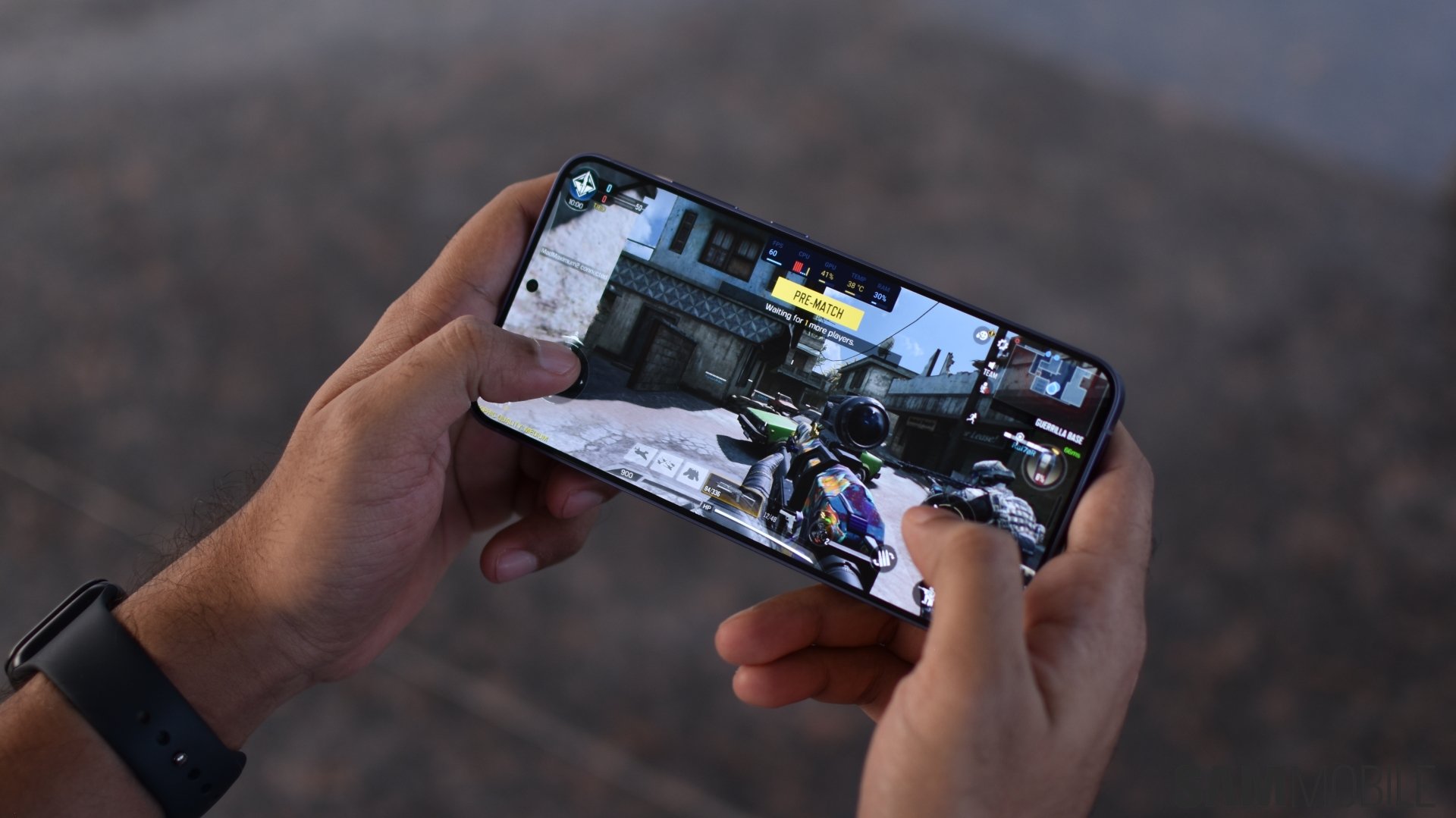
Coming to gaming, we play a lot of Call Of Duty Mobile, and that is what we used to test the Galaxy S24+. We turned on the 120fps settings and played for an hour at a stretch. The phone didn’t drop the frame rate below 112fps, which is very good.
However, we also noticed that the frame time, or how consistently frames are being delivered, isn’t great. That can make you feel like there’s some stutter even when the frame rate is high, an issue even last year’s S23 Ultra didn’t have. This could be fixed with a future update from game developers or from Samsung, though that’s not guaranteed.
Exynos 2400 brings noticeable improvement in power efficiency
There have been issues in the past where cellular modems inside Exynos chips weren’t power-efficient, and the Exynos 2400 brings noticeable improvement in that regard. We noticed only 2-4% battery drop overnight when the phone was in sleep mode.
Phones with previous-generation Exynos chips certainly consumed more battery in sleep mode. However, there is still room for improvement before Exynos chips can reach the excellence of the iPhones or devices with the latest Snapdragon processors.
Unlike the Galaxy S24 Ultra, the S24+ lacks Wi-Fi 7, a limitation of the Exynos 2400 we’re not happy about. But we did not find any issues with the 4G/5G or Wi-Fi connectivity. The call quality and signal reception were excellent throughout the review period, as well.
Software
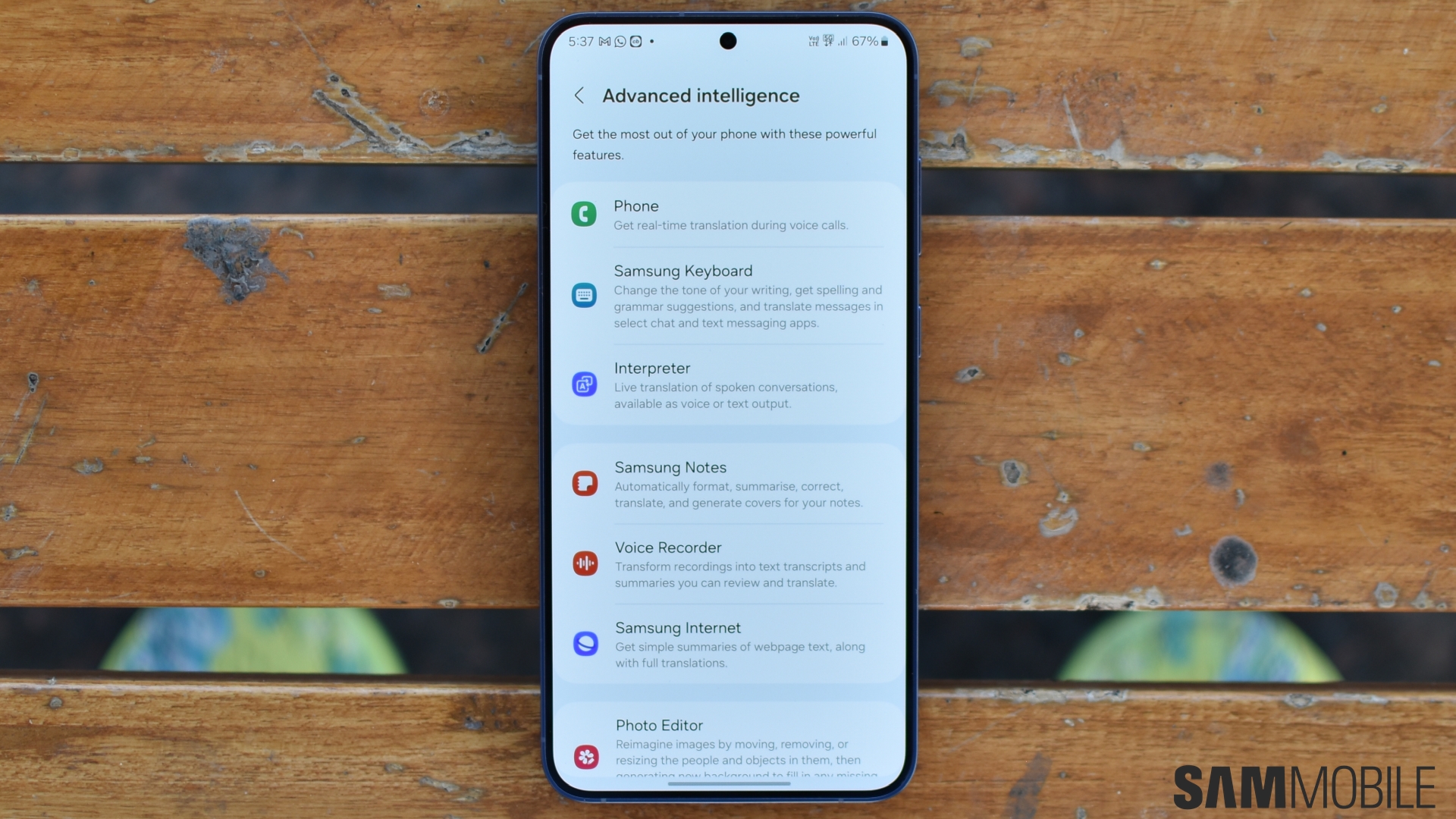
The Galaxy S24+ runs Android 14-based One UI 6.1 out of the box. As usual, it is filled up to the brim with various features. The smoothness of the UI is particularly impressive. All the animations and transitions appear very smooth and fluid. This is the smoothest version of One UI we have used in a long time.
Some of the new features include the ability to set any font for the lock screen clock widget, new widgets for the lock screen and AoD screen, a new transition when moving from the lock screen to AoD and vice versa, and Super HDR.
Then there are dozens of new AI-powered features, including Circle to Search, Generative Wallpapers, Auto Summary for Samsung Notes, webpage summarization in Samsung Internet, live language translation during voice calls and messaging, voice recording transcriptions and tagging, Generative AI-powered image editing, and Instant Slow-Mo for videos.
We quite liked the new lock screen widgets and AoD, new animations, Super HDR, Generative Wallpapers, and auto summarization of webpages. We also liked the Instant Slow-Mo feature, which turns normal videos into slow-motion videos. Language translation and grammar suggestions work really well, but Generative AI-powered image editing can vary from impressive to wonky depending on what you’re trying to do.
The Galaxy S24+, like the other S24 models, will get Android, One UI, and security updates for seven years. You can read more about the software and AI experience you get on the S24+ in our Galaxy S24 Ultra review.
Battery life and charging
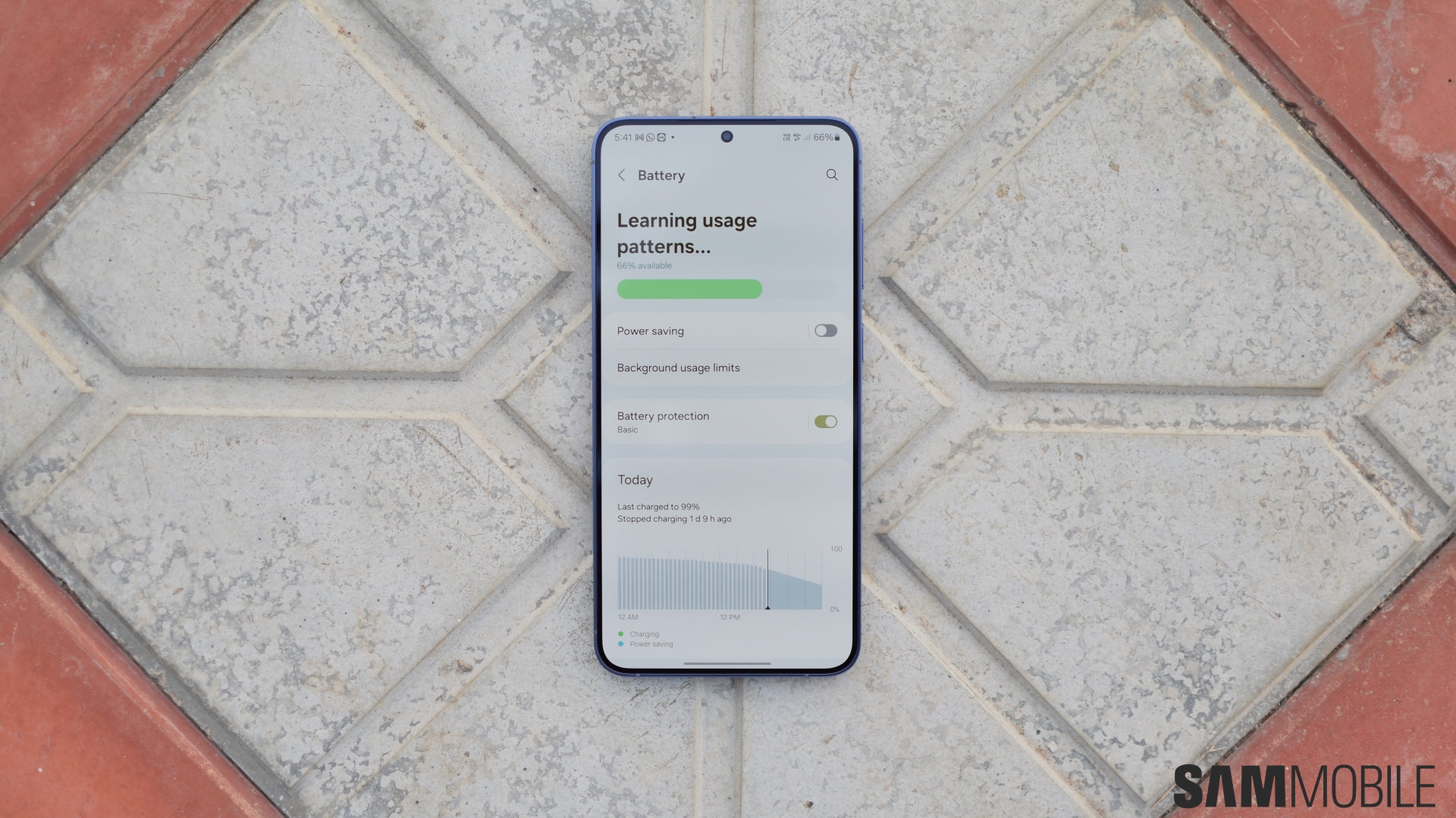
Similar to the screen, the battery on the Galaxy S24+ received a considerable upgrade. Its 4,900mAh battery is now almost as big as the Galaxy S24 Ultra’s 5,000mAh battery, and it has to power a slightly smaller screen, which should theoretically help it last longer.
But that isn’t the case, and it could largely be due to the Exynos 2400 processor. While it is a big upgrade over previous-generation Exynos chips in performance and efficiency, it still isn’t as good as its Snapdragon counterparts.
During our review period, we noticed that the Galaxy S24+ can last a complete day with heavy usage and a day and a half with more modest use. Battery life felt a little underwhelming compared to the S23+ despite the difference in battery capacity, but that is just nitpicking and almost everyone will be satisfied with how long the S24+ can go on a single charge.
The Galaxy S24+ can last a complete day with heavy usage
There is 45W fast charging, which seems slightly faster this year. The phone charged up to 70% in 30 minutes, and a full charge took less than an hour. That is a decent upgrade compared to the Galaxy S23+ for the 30-minute charge performance.
A full charge is only a few minutes faster, though. As usual, there is no charger in the box, so you will either have to use your existing charger or buy a new one, especially if you want to take advantage of 45W charging.
To go along with the 7-year update promise, Samsung has added a few battery weardown protection measures. The Basic mode charges the phone up to 100%, stops charging it, and then resumes charging when the battery drops to 95%.
With the Adaptive mode, the battery charging stops at 80% and resumes charging when you’re about to wake up. It takes a few days for the phone to learn your daily sleep patterns and sync charging accordingly.
The Maximum battery protection mode stops charging when the battery reaches 80% of its charge level, which is supposedly good for battery health, but then you would get 20% shorter battery life in day-t0-day use.
Verdict
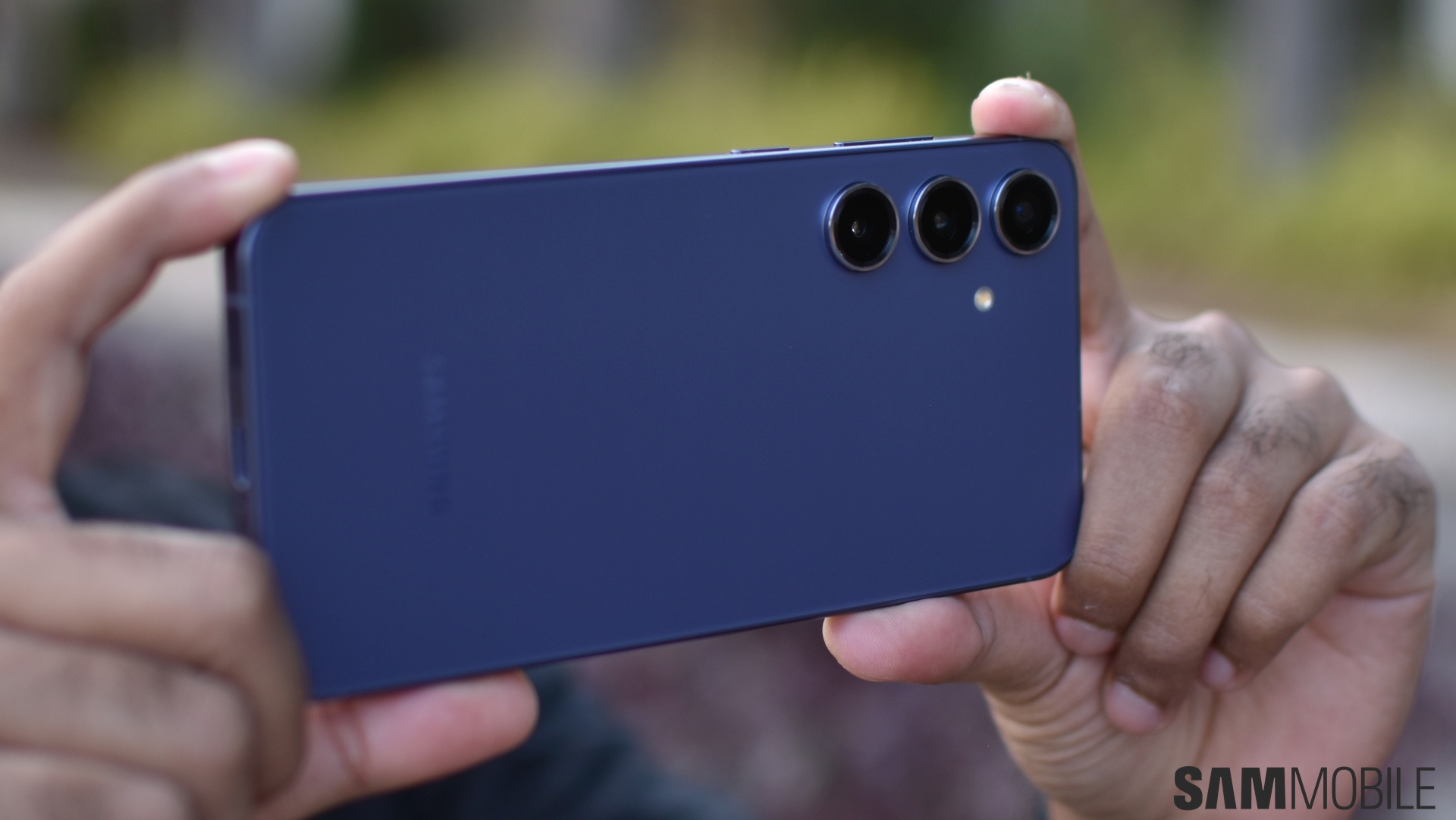
The Galaxy S24+ is the best-ever Plus variant Galaxy S phone that Samsung has ever released. The big, bright, and beautiful screen, coupled with great stereo speakers, makes this phone a really good phone for media consumption. Its design may look very simple, but it works by getting out of sight and letting users enjoy the phone instead. It is quite slim and comfortable to hold. Battery life is great, too.
It offers a very balanced camera performance across all its cameras, front and rear. No matter the conditions, the primary and selfie cameras perform really well across still images and videos. The telephoto and ultrawide cameras have started to show their age, though, and we would like to see better hardware next year.
The performance of the Exynos 2400 turned out to be quite good, even if it isn’t as good as the Snapdragon 8 Gen 3. Battery life is good, too. The smoothness of One UI is also a sight to behold, and most of the AI features work well.
However, we can’t help but feel that Samsung has intentionally stopped the Galaxy S24+ from being truly amazing by limiting a few features to the Galaxy S24 Ultra, including Gorilla Glass Armor, Wi-Fi 7, and the ability to switch between the cameras while recording 4K 60fps videos. It doesn’t stop the S24+ from being an excellent phone, but the Ultra model is still the one to get if you want the absolute best the Korean giant has to offer.


![Amazon Discounts AirPods 4 to $89.99 and AirPods Pro 2 to $169 [Updated]](https://images.macrumors.com/t/mSlTVr2DUD6OsLxlm1lQGBN44Y4=/400x0/article-new/2023/05/Airpods-Pro-2-Discount-Feature-Orange.jpg?lossy)

